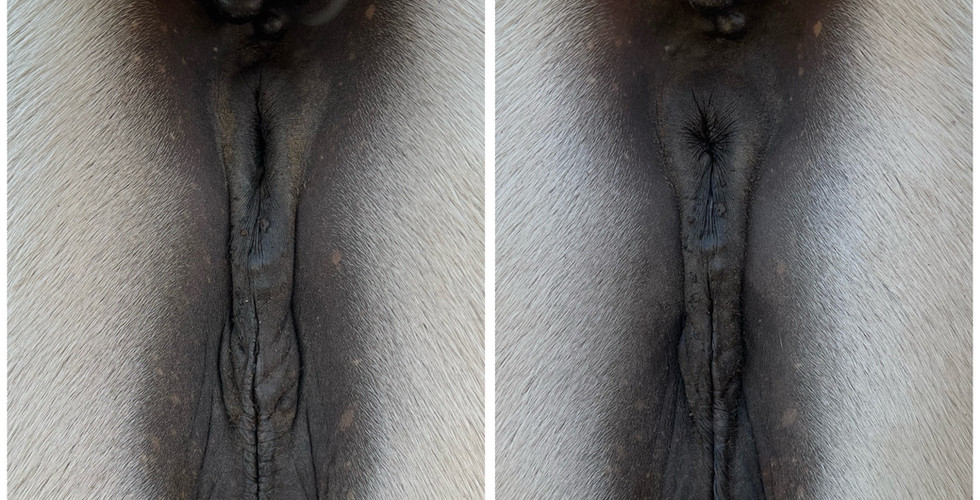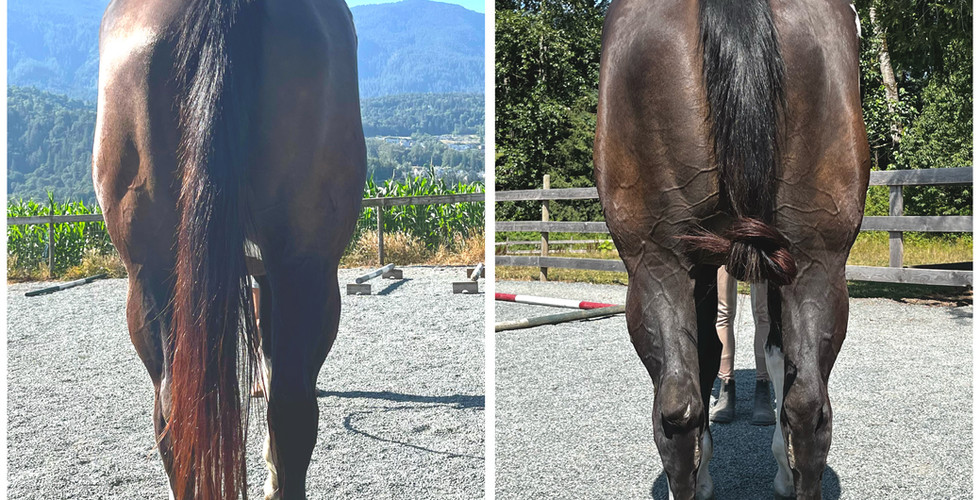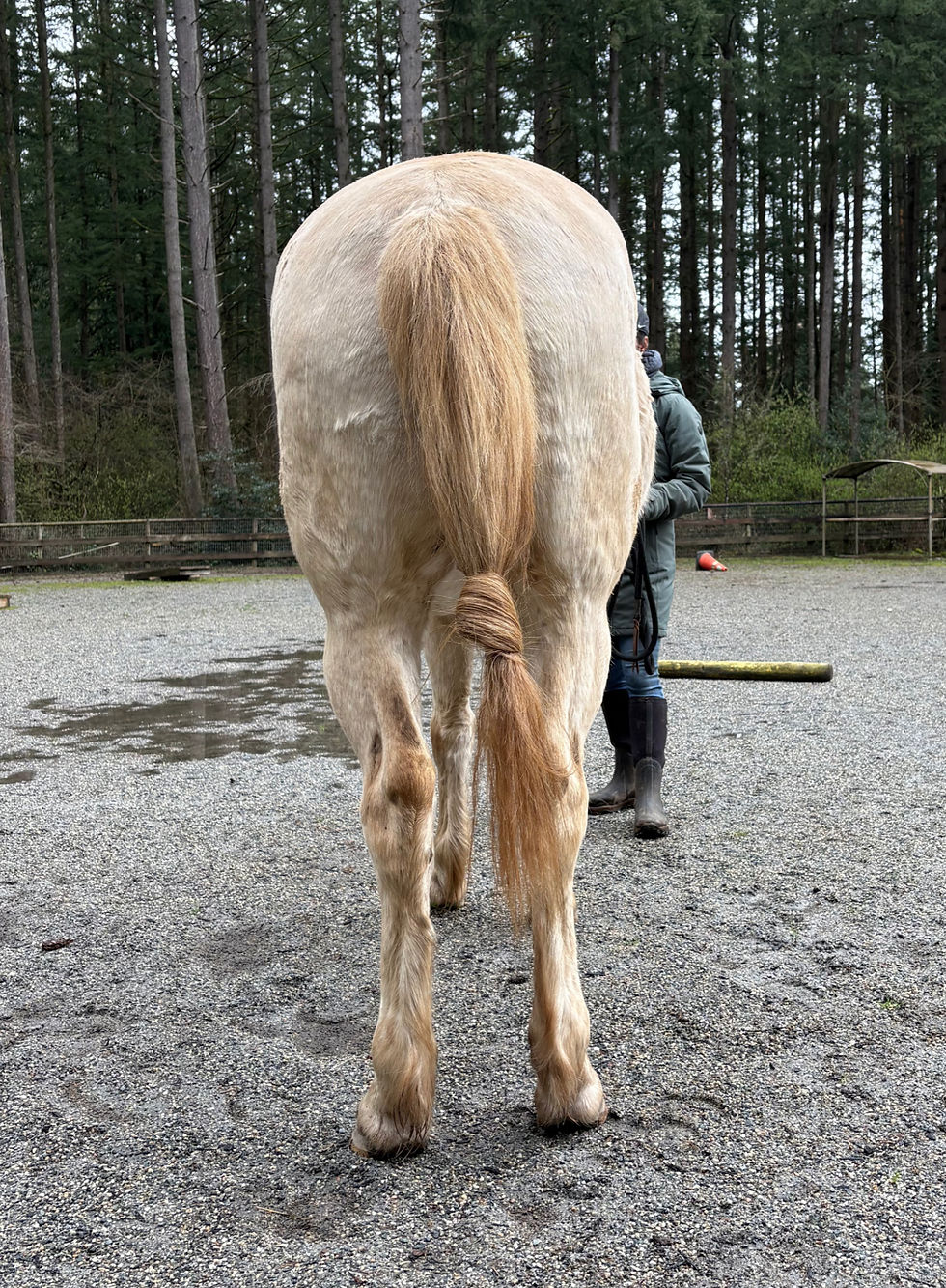You Can’t Placebo a Horse
- Elisse Miki

- Sep 3
- 4 min read

In Humans, Belief Can Heal
One of the most remarkable discoveries in human medicine is the placebo effect.
Far from being “fake,” placebo responses are deeply biological. Research has shown that belief in a treatment — even one with no active ingredient — can reduce pain, modulate inflammation, and trigger real neurochemical changes in the brain and body (Benedetti et al., 2005; Colloca & Barsky, 2020).
When a human believes in a treatment, their brain can release endorphins, change muscle tone, and alter perception of pain. This mind–body connection is powerful… but it relies on a conscious expectation of benefit.
Belief can change biology — but only if you have the belief to begin with.
Horses Don’t Have Expectations
Now here’s where it gets interesting: horses don’t conceptualize "treatment". They don’t know if I’m using a technique with 100 years of history or one I learned yesterday. They don’t care about my 25yr education. They haven’t read about me on Google before I come. They have no expectations to influence the outcome.
That means one thing:
You can’t placebo a horse.
If it works, the horse changes. If it doesn’t, they won’t. It’s that simple.
In the equine world, our “proof” comes from ROM, movement, posture, behaviour, feedback, and function — not from belief.
The Honest Gift of Immediate Feedback
This is one of my favourite things about working with horses. The feedback is raw and honest.
When I use:
Visceral osteopathic techniques to release fascial dysfunction around the kidney or improve diaphragm motion, gait symmetry often changes in minutes.
Structural orthopedic techniques to mobilize the sacroiliac joint, I can see the hindlimbs step under with more ROM immediately.
Craniosacral techniques to ease spinal dysfunction (tube, vertebrae, fluids), the horse’s head carriage softens and coordination improves — sometimes in the very next moment
There’s no “see, you should feel better.” The horse shows me immediately. And yes, with complex rehabilitation cases it can take time to unwind the full picture — but there should always be some form of objective change right away. Even small shifts matter, because they show us whether the work is creating real progress or not.
To the Skeptics…
There’s a narrative in some human therapy circles that many soft tissue techniques “don’t work the way we think they do” and that there’s “no evidence” for the mechanisms we describe.
I’m all for science, and I agree that the nervous system plays a central role in change — in fact, this is entirely aligned with osteopathic principles.
But here’s my question to those skeptics:
“If soft tissue and osteopathic techniques don’t work, how do you explain immediate, visible changes in ROM, gait, posture, and behaviour… in a horse that cannot be placeboed?”
We aren’t talking about a patient reporting “I feel better” because they think they should. We’re talking about observable, repeatable changes in movement patterns, joint loading, and muscle recruitment in an animal with no expectation of what just happened.
And if those changes happen consistently across hundreds of cases, it suggests there’s more going on than just “patient expectation.”
Why I Document Everything
In my human work, patient perception can cloud the picture. In horses, the evidence is in plain sight. That’s why I rely on before-and-after video and photos as well as accurate chart notes and closely monitoring behavioural feedback — not as a marketing trick, but as an accountability tool.
You can’t talk a horse into looking sounder. The change has to be real.
Whether I’m working on a human or a horse, my job is the same: assess, apply a treatment, reassess. But with horses, there’s no placebo safety net. What I do either creates change… or it doesn’t.
And for me, that’s the beauty of this work. Horses keep us honest. They keep us humble. And when they do change — when they move away freer, softer, more balanced, and behavioural feedback changes — you can trust that change is real.
See the Change for Yourself
Words can only go so far — this is where horses show us the truth.
Below are a series of before-and-after comparisons taken from my assessments and treatments over the past few years. None of these changes can be explained by placebo. They are real, visible, and repeatable outcomes of osteopathic methodology and techniques.
You’ll see both within-session photo comparisons and others taken months apart. When you see “before” and “after” labeled, those changes occurred within the same hour. The examples with dates show the kind of progress that unfolds over weeks or months.
Remember — if what we are doing is working, we should see some form of immediate, objective result, whether that’s a change in gait, an increase in range of motion, or a shift in behavioral feedback.
Together, these examples demonstrate two important realities:
The immediate changes that can occur within a single session;
The deeper, lasting improvements that emerge with ongoing care
And yes, I also have comparison videos — but I can’t upload too many here without slowing down the page and making them hard to view. If you’d like to see more pre- and post-session videos, follow along on my socials where I share them as often as I’m able.
CLICK ON PHOTO BELOW TO SEE ENTIRE SLIDESHOW
Follow here for more video comparisons and case studies:
Instagram: @eqtherapeutics
Facebook: EQ Therapeutics
References
Benedetti, F., Mayberg, H. S., Wager, T. D., Stohler, C. S., & Zubieta, J.-K. (2005). Neurobiological mechanisms of the placebo effect. Journal of Neuroscience, 25(45), 10390–10402.
Colloca, L., & Barsky, A. J. (2020). Placebo and nocebo effects. New England Journal of Medicine, 382(6), 554–561.


























































































































Comments